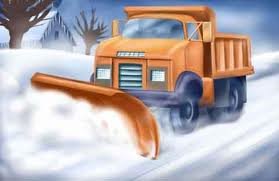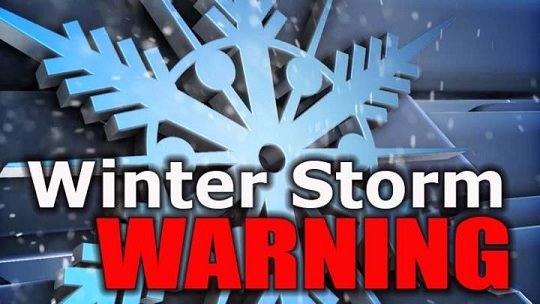Fall & Winter Tips
Fall Tips
Winterizing Your Home
As Fall approaches, it is a good time to think about “winterizing” the your home. The time to winterize your home is before the cold weather sets in. Performing a few simple steps around the house can save you time, money and stress later on.
Here are the DIY Basics on winterizing your home brought to you by Ace Hardware.Source: http://www.diynetwork.com/how-to/how-to-winterize-a-home/index.html
Do a little prep work and head to the hardware store to keep your home warm, before cold weather strikes this winter.
• Start outside by cleaning gutters and downspouts.
• Trim trees and remove any dead twigs which can break during a winter storm.
• Caulk cracks to stop drafts. Add or replace worn-out weather stripping around doors and windows.
• Use outlet seals to stop air leaks in electrical receptacles and light switches.
• The bottom of your garage door should also have a weather strip to seal out drafts.
• Keep your home's temperature at least 65 degrees to keep pipes from freezing.
• Pull out your old furnace filter, vacuum the intake grill and replace the filter regularly.
• The flashing around the chimney or vent pipes should be watertight.
• Close the fireplace damper when you are not using it.
• Drain underground sprinklers, outdoor faucets and garden hoses. Store hoses inside.
• Caulk and patch any cracks or gaps in the siding. Seal brick exteriors with a high quality masonry sealer to stop any "freeze-thaw" damage.
• Clean gutters to prevent ice damning. This happens when water can't drain through the gutters and seeps into the house causing water drips from the ceiling and walls.
• Seal up air leaks in the attic. You should have R-30 insulation in the attic.
Winterizing Your Yard
When there is a chill in the air, you know winter is on its way. You’ve taken care of winterizing your house, but don’t forget to winterize your yard--and that includes plants, trees, lawns, and irrigation systems, too.
Lawn
In order to keep your lawn as nice and healthy as possible for next spring, here are some pointers to keep in mind.
• Mow until the grass stops growing. Scotts WinterGuard fertilizer should be applied in the fall. It will prepare the grass for winter, but will also give you a head start for a green turf next spring.
• Aerate the lawn
• Reseed any bare spots
• Rake fallen leaves in yard and flowerbeds and remove
Bushes, Trees, and Shrubs
Different bushes, trees, and shrubs require different levels of pre-winter maintenance, while some require none at all.
• Prune trees
• Spread a 2 or 3 inch layer of mulch around tree bases, not touching the trunk
• Leave evergreen shrubs and trees as they are
Watering and Irrigation Systems
If you don’t empty irrigation systems before freezing temperatures hit, you could end up with burst hoses and pipes. Make sure to ready your hoses and irrigation systems for the winter.
• Drain garden hoses
• Store hoses in the shed or garage
• Empty the irrigation system by draining or blowing out the water
• Disconnect water and air pressure systems leading to irrigation pipes
• Leave irrigation valves open slightly to avoid pressure build-up
Source: http://www.livingwithmyhome.com/diy-do-it-yourself/winterize.aspx

Winterizing Your Vegetable Garden
For many gardeners, winter is just around the corner. While your garden may be sleeping for most of the coming winter, plenty of tasks can be done to prepare for next spring. I t may not seem like it, but this is the perfect time to begin preparing the garden for a dynamic growing season next year. After working hard during the garden season, it's always a little tempting to leave it all until warm weather, but by doing so, we would be inviting garden pests and diseases to invade our gardens. A few chores now will make a huge difference in next year's vegetable garden. So, to give your garden a head start, take these important steps to winterize your vegetable garden.
1. Clean, clean, and clean a bit more. Whether you have raised beds, containers, a garden plot or a combination of all three, the key to preventing many diseases and pest invasions is to keep a clean garden year-round. Remove all poles and other garden equipment, etc. and store in your shed or garage. Remove all dead plants, leaves, weeds and any plant matter left after the harvest. If it's healthy, toss it in the compost tumbler. If it's diseased or infested with any type of insect, then discard it or burn it. Once you've cleared all of the plant debris, use the leaf rake to pick up any small bits that may be left in the garden. Gather any pots, tools, garden markers, hoses etc. and put them away in your shed or garage. At this point, you should be looking at a clean, debris free garden or bed.
2. Test your soil. Now that your garden is empty, it’s a good time to do a soil test for pH levels and mineral content. You can find out what your soil is lacking, giving you time to work out a plan to amend the garden if needed.
3. Time to reflect. This is a good time to grab a notebook or a journal and jot down successes and failures, favorite vegetables, diseases and pests that were problems, watering schedules that worked well, new methods or techniques that were used, and anything that pops into your head that you may want to change during the next garden season. You could go so far as to sketch out plans if the urge strikes.
4. Dig or till the garden. Now that you've rested while taking notes, it's time to dig or till the garden. Insects often hide in the soil until spring, so disturbing the soil will help clear them out. I t also prepares the soil for next spring, which means you'll have a head start on planting and less work.
5. Protect your soil. At this point you can plant a cover crop such as clover, fava or soy beans, rye, winter wheat or hairy vetch are some common cover crops. Rye is a popular choice because it's inexpensive and grows quickly. The cover crop is planted in the fall, and tilled into the soil in the spring. The crop can protect the garden from erosion, soil diseases and pests plus it improves the soil by adding organic matter back into the garden. Different crops work best for each area, so consult with local garden centers, grain elevators or your university extension office website for suggestions. An alternative to a cover crop, is adding a layer of compost, manure or other organic matter and covering that with a layer of straw or other material. There should be a total of four to six inches, no matter what material you use, in order for it to be effective. The organic matter will slowly decompose as it protects the soil from freezing and unfreezing during the cold months.
Sources: http://www.veggiegardener.com & http://www.livingthenourishedlife.com
Winter Tips
Snow Plowing Information
Parked Vehicles- Residents are advised to park in their driveways to minimize the likelihood that their car will be plowed in, splashed by salt spray, damaged by the disposition of windrows or involved in an unfortunate collision. To help avoid the frustration that occurs when a snowplow covers a driveway with snow after a resident has shoveled, residents are advised to shovel snow to the right of the driveway (looking toward the street) into the yard instead of the street. Source: co.saint-marys.md.us
Service Area Map
An interactive Service Area Map has been provided to geographically show the progress crews are making on county maintained roadways. The program allows citizens to zoom in and / or out as well as search for a specific road name. As roadways are initially treated / plowed, the roadway(s) will be shaded purple. This map is updated every fifteen minutes. stmarysmd
How To Prepare For A Winter Storm
The Earth's elements can be scary, and if you're not prepared for events you can find yourself in a sorry spot. Here are a few tips to help get you prepare for Mother Nature's snow and ice spectaculars. When it starts to move into winter, it's best to have all emergency supplies selected beforehand.
Steps:
1-Make sure you winterize your home in the Fall to have your home prepared in advance (tips are posted above).
2- Make sure you have some basic survival items in your house before the threat of a storm:
• A shovel- You may need to dig yourself out before help arrives and they are unlikely to dig out your car.
• Flashlights- Make sure you have good quality flashlights and lamps with fresh batteries. Also purchase "Self Powered Flashlights" and "Self Powered Radios". Some models will also charge your cell phone.
• Food- Make sure you have enough non-perishable food to last a few days. Even if your budget is tight you should make sure to keep extra food in the house. Canned and powdered foods are good for long-term storage. Don’t forget to have plenty of pet food.
• A Can Opener- Make sure to have a good old-fashioned manual can opener.
• Blankets and Warm Clothing- You may already have these items, but remember you will need enough blankets to keep you warm without any heat and in adverse conditions.
• A Camping Stove or Barbeque Grill- A gas powered camping stove is a wise investment for any emergency situation. If you have an electric stove in the kitchen a camp stove is almost a necessity. Be sure you use it with proper ventilation and have plenty of backup fuel.
• Matches to light your gas range/camping stove/candles- Do not rely on lighters that can run out of fuel or break down all too easily.
• A Battery Operated Radio- This way you can get news without wall power. Make sure the batteries are good. It is also possible to buy a motion charging radio, as you can with a flashlight.
• Prescription Medications- Like food, it is always wise to have enough to last you a few days.
• Anything else vital to your household- You should always have ample supplies of items like diapers, formula, batteries, toiletries, and so on before the storm hits.
• A wall phone with a cord, or a portable cellphone charger- Cordless home phones will not work when the power is out.
• Have plenty of bottled water and toilet paper.
• Have plenty of firewood, gas/oil, kerosene, etc. You have no idea how long the electricity may be out.
3- Fill up all your vehicles with gas.
4- Bring your pets inside.
5- Anticipate a long power outage. By preparing you can make a power outage bearable.
6- Decide what to do with the food in your freezer and refrigerator. If the power will not be out long leave the doors closed, keeping the air inside, and your food will most likely be fine. If it seems like it will be a while (one or more days) move the food. The nice thing about a winter storm is there is plenty of cold to store your food. Frozen items can be left outside (keep an eye on the temperature) and refrigerated items left in an enclosed porch or other cold area. Eat perishable foods first, keeping canned goods for more lengthy outages.
7- Keep warm to survive the storm. Keep blankets ready, and above all, stay warm. Drink hot liquids and eat hot foods.
8- Have entertainment. Bored people can become anxious, panicky, or plain irritable and this can sometimes lead to poor decision-making during a winter storm. Have entertainment such as books, board games, cards, crafts, and so on in the house. It's entirely possible to even enjoy a power outage!
Source: http://www.wikihow.com/Prepare-for-a-Winter-Storm
Pages
- Home
- Landings HOA
- About Us
- Location
- Home Owners Association
- Community Standard
- Contact HOA
- FAQ
- Important Numbers & Websites
- Community Happenings
- Calendar of Events
- Neighborhood News
- Volunteer
- Tips
- Lawn & Garden Tips
- Fall & Winter Tips
- Documents & Information
- Public Documents
- HOA Dues
- Property Improvements
- Concerns/Complaints
- Rental Property
- Landlords
- Renters
- Cedar Cove Community Assocation
- Cedar Cove Community Beach
- Committee Documents
- Board Documents
- Board 2010
- Board 2011
- Board 2012
- Board 2013
- Board 2014
- Board 2015
- Board 2016
- Board 2017
- Board 2018
- Board 2019
- Board 2020
- Board 2021
- Board 2022
- Board 2023
- Board 2024

